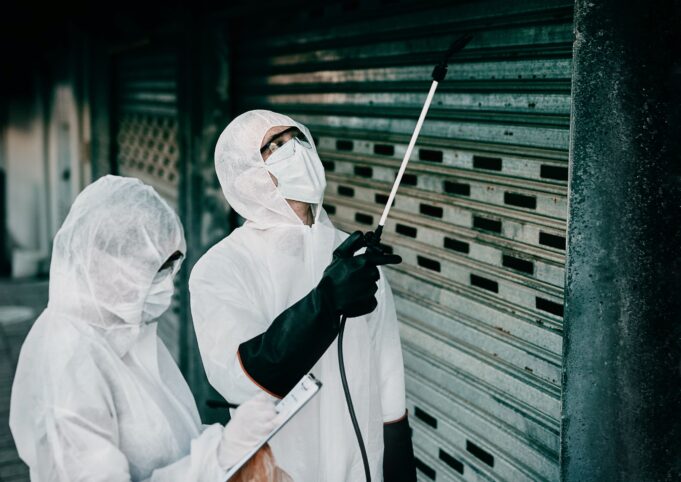As the leaves turn crimson and the crisp autumn air settles in, hospitals can become hotspots for a different kind of fright—pests! From scurrying rodents to bloodthirsty bed bugs, these creepy critters seem to make themselves more at home as the temperatures drop. But don’t let these uninvited guests haunt your hospital facilities. With the right pest control strategies, you can keep the spooky creatures at bay and ensure a safe, hygienic environment for patients and staff.
The Fall Surge: Why Pests Love Autumn
Fall is a time when pests are actively seeking shelter and food sources, making hospital facilities an attractive option. According to a study on hospital pest management, the cooler months see a rise in rodent activity as these critters search for warm places to nest. Rodents aren’t just a nuisance; they can cause structural damage and pose significant health risks by carrying pathogens that lead to diseases. And that’s just the start of it—creepy crawlers like cockroaches and even bed bugs can invade hospital spaces, making it crucial to prepare for the onslaught.
Dealing with the Ghouls and Goblins of Pest Control
So, what’s the best way to rid your facilities of these seasonal invaders without turning to a cauldron of toxic chemicals? The answer lies in integrated pest management (IPM)—a strategy highlighted in a comprehensive study by the Journal of Advances in Agriculture on rodent control strategies in hospitals. This method emphasizes a combination of tactics like habitat modification, exclusion, and non-chemical treatments to manage pests effectively:
Here are some strategies you can implement this season:
- Seal the Facilities: Close off entry points that pests use to invade your facilities. Regularly inspect windows, doors, and vents to ensure they’re tightly sealed. Rodents only need a quarter-sized opening to squeeze through, so pay attention to the tiniest cracks!
- Set Pest Traps: Use traps strategically placed around likely rodent hideouts. These traps are crucial for both detecting and controlling pest activity. A study emphasizes that effective rodent traps can reduce the reliance on harmful pesticides and prevent potential contamination in healthcare settings.
- Evict Bed Bugs Before They Settle In: Bed bugs in hospitals, particularly in high-risk areas like intensive care units (ICUs), can cause significant disruptions. They might be small, but they pack a terrifying punch in terms of reputational damage and patient dissatisfaction. Proactive inspections and early detection are key.
- Don’t Forget the Kitchen: Cockroaches are another common autumnal invader, often found in hospital kitchens and food storage areas. They can trigger allergies and spread bacteria like Salmonella. This study recommends routine sanitation checks and using baits over sprays, as the latter can disperse the pests instead of eliminating them.
- Choose Your Potions Wisely: Avoid chemical-heavy options that may cause more harm than good. Research from Indoor and Built Environment shows that pesticide residues can linger, affecting indoor air quality and patient safety. Opt for safer alternatives such as diatomaceous earth or essential oil-based treatments.
Tricks and Treats: The Benefits of Proactive Pest Control
Implementing a robust pest control strategy in hospitals doesn’t just exorcize the pesky pests—it also reduces the risk of health complications linked to pests and pesticides. In healthcare facilities, where patients may already be immunocompromised, exposure to contaminants from pests or chemicals can exacerbate existing health conditions.
But there’s more! A pest-free environment boosts morale, reassures patients and visitors, and maintains the hospital’s reputation.
Don’t Let the Spooky Season Turn into a Pest Invasion
As the days grow shorter and the nights longer, don’t let your guard down against these autumn invaders. With the right measures in place, you can keep your hospital facilities free of spooky surprises. Whether it’s rodents scurrying around or bedbugs lying in wait, proactive pest management ensures that your hospital remains a sanctuary of health not a haunted house.






